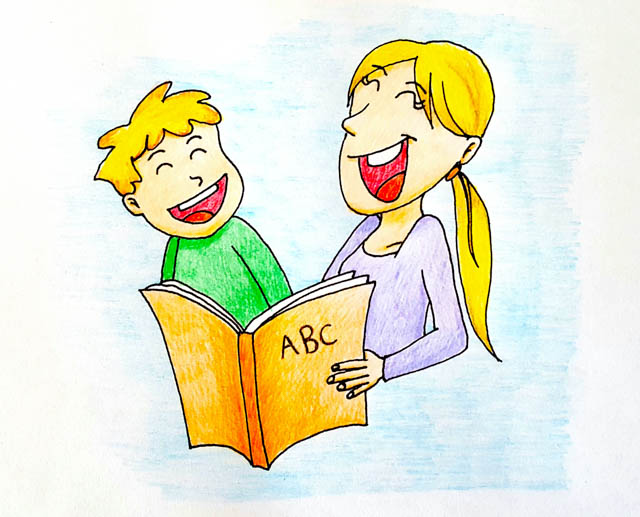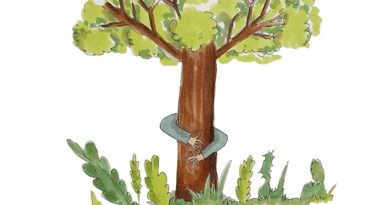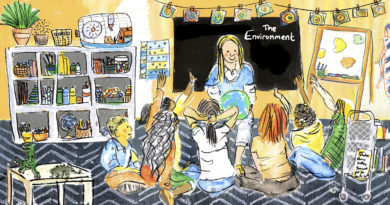Laughing and Learning
Why did Miss Tomato turn red? … She saw Mr. Green pea.
Not funny? Well, you are not in third grade. If you are reading this, you are most likely over 18 and a parent. BUT, you are also interested in what makes your kids laugh, learn, and apply logic. Kids love jokes, and according to research, humor can actually increase learning.
Mary Kay Morrison, researcher and educator, reports that, “Humor actually lights up more of the brain than many other functions in the classroom. It actually strengthens memories.” She has looked at brain scans that showed high levels of activity in multiple areas of the brain when humor was used in conversation and instruction. Her book Using Humor to Maximize Learning offers insight into what she calls the new frontier of education: the benefits of humor.
After moving to Switzerland some years back, I visited my daughter’s classroom in order to get a feel for her courses, teacher and routine. I was really surprised at the seriousness of the school day. As an elementary school teacher trained in the United States, I had been used to hearing squeals of laughter in class when reading Dr. Seuss books or Shel Silverstein’s poetry. Developing a safe place for kids to learn was high priority, and starting the school day on a humorous note was one way to lower the anxiety level and ease tension. Don’t get me wrong: my bulletin boards noted that, “Learning is Hard Work,” but kids soon learned that hard work can be either mixed with fun or rewarded with it.
Illinois (U.S.) English teacher Tracee O. found a way to teach grammar in a comical way. She started a Pinterest board (check out Grammar Errors on Pinterest) with examples of grammar glitches. She uses those when teaching or reviewing a writing skill like your and you’re, their and there. Raising the fun factor has helped her students to remember more because they think of the pictures and the characters on the memes she posts.
Speech communications teacher Kaywin Cottle writes,
Because I know that a good laugh eases tension, increases creativity…I will do almost anything to get the class rolling with laughter–voice inflections, exaggerated facial expressions and movements, hilarious personal stories (of which I have way too many), ridiculous examples…and I encourage my students to do the same.
As a teacher in a bilingual school in canton Solothurn, I felt that the kids often arrived with more anxiety than their single-language counterparts in public schools. Often they could speak no English, and it was up to me to make them feel at home. A humorous phonics program helped. We used Letterland, which encouraged the use of costumes, wigs, and wands to engage the learners. I also let the students know that each mistake I made was the first mistake I had ever made. The kids always corrected me on that one, of course. I tried to diffuse anger and frustration with a joke or two, and I encouraged the kids to do the same. I teamed up with another teacher and held a joke hour, where kids could tell jokes and riddles. An annual magic show was a great hit with the students. They performed for other classes and donned floppy hats and fake mustaches. One thing that really cracked them up was when I assigned oral book reports to be presented in English. For third graders, this task could be very daunting. I eased their jitters by reading a children’s book in German myself and presenting MY oral book report in German. They loved that they could correct my mistakes. They found my (very few, of course) German mistakes hilarious, and that made them relax a bit. After all, even their teacher was not perfect.
What about the class clowns? Although these students sometimes demand too much instructional time, according to Morrison, one way to deal with them is to allow a short story or joke-telling minute to, in effect, get the silliness out before the lesson starts in full.
It’s fun to laugh at ourselves, and as a teacher I try to model this behavior. But I have to be careful. Psychologist and founder of the World Laughter Tour Steve Wilson warns that sarcasm and cynicism should not be confused with positive humor. He believes that laughter shows that we’re friendly and approachable, and it is sometimes referred to as the “social glue.”
According to educator and journalist Mark Phillips, “Schools and classrooms are rife with absurdity….Being able to survive and thrive depends on the ability to detach, see the absurdity, not take oneself too seriously, not personalize, not become defensive and as much as possible, laugh with some degree of frequency.” I am presently an elementary teacher in a US school who is expected to teach common core standards to a class of wonderful, high-spirited learners, the majority of whom are English language learners. I find humor helps everyone involved: students, teachers, principals and parents.
By Mary Bider
Mary raised her family in Switzerland and she loves to come back for visits, read Mothering Matters online, and sleep in on weekends. She is currently living in the U.S. and working as an elementary school teacher and part-time orchardist.
Illustration by Lara Friedrich
Lara has been a freelance illustrator for Mothering Matters since early 2013. She is in her third year of University (majoring in Psychology) where she’s currently working as an assistant in a research project in pedagogy. Lara is also an assistant translator from German to English for various fiction books, and also works as a demo singer for the songwriter Kate Northrop.




